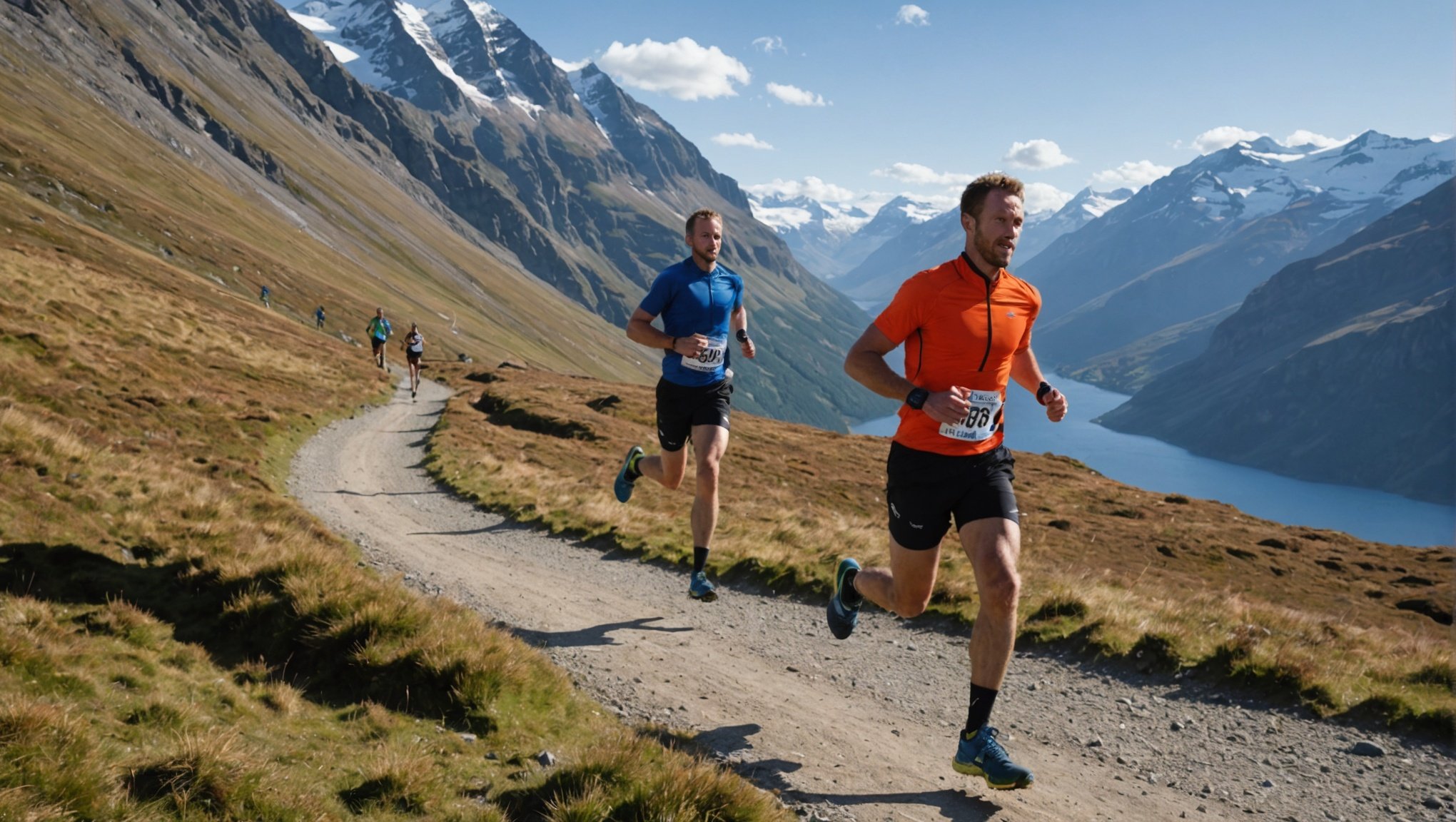Understanding Altitude Training
Altitude training is a strategy used by many athletes, particularly those in long-distance running, to improve endurance. The concept is relatively straightforward but deeply physiological. At higher altitudes, the oxygen levels are considerably reduced. This environment challenges the body, prompting it to adapt over time.
One of the primary physiological effects of altitude training is the stimulation of red blood cell production. This occurs because the body strives to deliver adequate oxygen to tissues even with reduced availability. By increasing the red blood cell count, athletes can enhance oxygen transport and utilization. As a result, endurance improvement becomes more pronounced when returning to sea level – a boon for long-distance runners.
Also read : Customized Plant-Based Diet Plans: Strategies for UK Sports Nutritionists to Fuel Vegan Athletes
Numerous scientific studies have corroborated these benefits. Research has shown that athletes who engage in altitude training often experience enhanced performance in endurance activities. Their bodies can efficiently manage oxygen at both high and low altitudes, leading to sustained improvement in their athletic capabilities.
Implementing altitude training in an athlete’s regimen can provide substantial performance advantages. The adaptations gained through this training allow runners to push beyond previous limits, maximising their endurance potential.
Also read : Navigating the Complexities of Multi-Sport Event Management in the UK: Key Challenges Uncovered
Specific Benefits for Long-Distance Runners
Long-distance runners often seek performance enhancement through various methods. One of the notable approaches is altitude training. This method offers several specific benefits for endurance runners.
Improved Oxygen Transport and Utilization
Altitude training stimulates the body to adapt by improving oxygen transport and utilization. When exposed to higher altitudes, the body experiences a state of hypoxia, or low oxygen levels. In response, physiological adaptations occur, enhancing the muscles’ ability to extract and utilise oxygen. This process is crucial for endurance runners, as efficient oxygen usage is directly linked to running performance.
Increased Red Blood Cell Production
Another significant benefit is the increase in red blood cell production. At altitudes, decreased oxygen pressure triggers the production of erythropoietin, a hormone that boosts the generation of red blood cells. These cells are responsible for carrying oxygen to the muscles, improving stamina and endurance. Hence, this adaptation can have a profound impact on a runner’s performance, particularly in races.
Enhanced Mental Resilience
Additionally, altitude training can enhance mental resilience, which is vital during long races. Coping with the physical demands of high-altitude training can build mental strength, helping runners remain focused and persistent. With these combined physiological and psychological advantages, runners are better equipped to tackle the challenges of long-distance events.
Practical Tips for Altitude Training
Altitude training can be a game-changer for athletes. Integrating it effectively requires careful planning and understanding. Here are some altitude training tips to enhance your performance.
Planning Your Training Schedule
A robust training plan is essential. Begin by determining the altitude levels you will train at and adjust your sessions accordingly. It’s important to divide your training into cycles, with periods spent at both high and low altitudes to optimize recovery and benefits. Planning the duration and intensity of sessions helps in managing exertion levels effectively, ensuring you’re neither overworked nor underprepared.
Gradual Exposure to Altitude
Gradually increasing exposure to higher altitudes is crucial. Start by spending short durations at a higher altitude and progressively increase the time over weeks. This practice helps your body acclimate, minimising risks of altitude sickness and optimizing the potential benefits of such training regimes. Patience and consistency should guide your altitude acclimation process, rather than rapid elevation changes.
Integrating Altitude Training with Regular Regimen
Integrating altitude training within your regular regimen demands balancing the physical demands it places on the body. Consistent monitoring of fitness levels ensures the maintenance of overall performance. Leveraging periods of low-altitude training following high-altitude sessions can aid recovery and sustain energy levels. These strategies ensure a comprehensive and effective training approach, optimising your endurance and strength.
UK-Based Facilities for Altitude Training
In the ever-evolving world of athletic performance enhancement, altitude training facilities in the UK stand out as a crucial resource. These specialized facilities offer athletes the ability to simulate high-altitude environments without leaving the country. From elite altitude training camps nestled in picturesque locales to state-of-the-art indoor setups, UK training locations provide versatile options for athletes at various stages of their fitness journeys.
Altitude Training Camps vs. Local Options
When choosing between altitude training camps and local options, it’s essential to understand the differences. Altitude camps typically provide a concentrated environment away from urban distractions, allowing athletes to focus entirely on their regimen. Facilities such as these are ideal for those preparing for high-stakes competitions. However, for those unable to commit to extended periods away, local altitude simulation centres present a convenient alternative, making high-altitude training accessible year-round.
Altitude Simulation Technology
An integral aspect of this training, altitude simulation technology mimics the reduced oxygen levels found at high altitudes. This innovative tech is designed to enhance endurance by pushing the body to adapt to oxygen scarcity. Whether through dedicated altitude rooms or personal training masks, these technologies offer significant benefits for increasing performance capacities, lending athletes a competitive edge while training in familiar surroundings.
Expert Insights and Testimonials
Altitude training has gained substantial recognition among athletes and sports scientists alike. Expert opinions emphasize the physiological benefits that arise from training at higher elevations. This method has been shown to enhance endurance by increasing red blood cells and improving oxygen delivery to muscles. Sports scientists, such as Dr. John Thompson, have stated that implementing altitude training can notably boost performance in endurance sports.
Supporting these findings, numerous runner testimonials highlight successful experiences with altitude training. For instance, marathon runner Lisa Carter credits her significant performance improvement to her time spent at a specialised high-altitude training camp. She noted feelings of enhanced stamina and quicker recovery times post-training.
Moreover, there are compelling case studies featuring long-distance runners who have thrived under altitude conditions. A research project led by Dr. Emily Burke showcased a 15% improvement in participants’ VO2 max after just six weeks of altitude training. This serves as a testament to its effectiveness.
The running community has also provided feedback on the adaptation process. Many trainees have reported initial challenges, such as increased fatigue, but adjustments over time led to improved overall endurance. Such experiences underline the importance of acclimatisation and persisting through initial hurdles to reap altitude training’s full benefits.
Considerations and Safety Measures
Altitude training offers remarkable benefits, but it’s crucial to understand the potential risks associated with it. Achieving peak performance should never come at the cost of safety. These training methods can pose challenges, including reduced oxygen availability and increased physiological stress, which may lead to altitude sickness.
One critical aspect of altitude training is the need to be aware of and recognize altitude sickness symptoms, such as headaches, nausea, dizziness, and fatigue. Early detection is essential in preventing more severe outcomes like high-altitude pulmonary edema (HAPE) or high-altitude cerebral edema (HACE), which can be life-threatening if ignored.
To mitigate these risks, adherence to health precautions and guidelines is essential. Gradual acclimatization is a primary safeguard, allowing the body to adjust to reduced oxygen levels. Here’s a practical approach:
- Increase altitude exposure progressively over days or weeks.
- Stay hydrated and maintain a balanced diet to support body function.
- Monitor personal responses and adjust training intensity accordingly.
Additionally, training under the supervision of professionals with expertise in altitude training safety can provide a secure environment. Medical checks before and during training can be vital to ensure individual health compatibility and to track adaptation progress.






